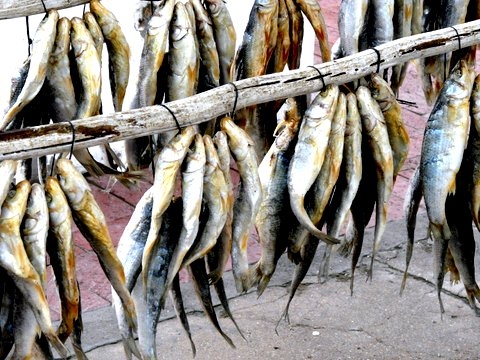Facts About Bokkoms
Bokkoms, a cherished traditional delicacy from South Africa's West Coast, is made from whole, salted, and dried mullet fish. The process involves salting the fish, drying them under the sun and wind, and sometimes imparting a smoky flavor. The term "bokkom" is derived from the Dutch word "bokkem" which refers to the fish's shape, hardness, and distinctive smell, reminiscent of goat horns. This delicacy has been enjoyed since the early European settlers arrived in the region.
To prepare bokkoms, small mullet fish are used along with coarse salt and fresh water. The fish are salted, pressed, and then left to dry in the open air for about five days. In modern times, some producers use drying ovens to streamline the process. The heart of the bokkom industry is Velddrif, often dubbed the "bokkom capital" where the majority of South Africa's bokkoms are produced.
Bokkoms are traditionally enjoyed with white wine, bread, jam, and coffee, and they can also be incorporated into various dishes. However, there are environmental concerns due to declining fish stocks, as the Southern mullet is now considered an unsustainable species. The term "bokkoms" has even made its way into Afrikaans proverbs and is associated with certain South African plants.
In popular culture, bokkoms are often compared to dried herring, bloaters, kippers, and bucklings, although there are differences in the types of fish used and the smoking methods. While bokkoms are a hit in the Western Cape, they have not gained as much popularity in other parts of Southern Africa.

 Zimbabwe
Zimbabwe